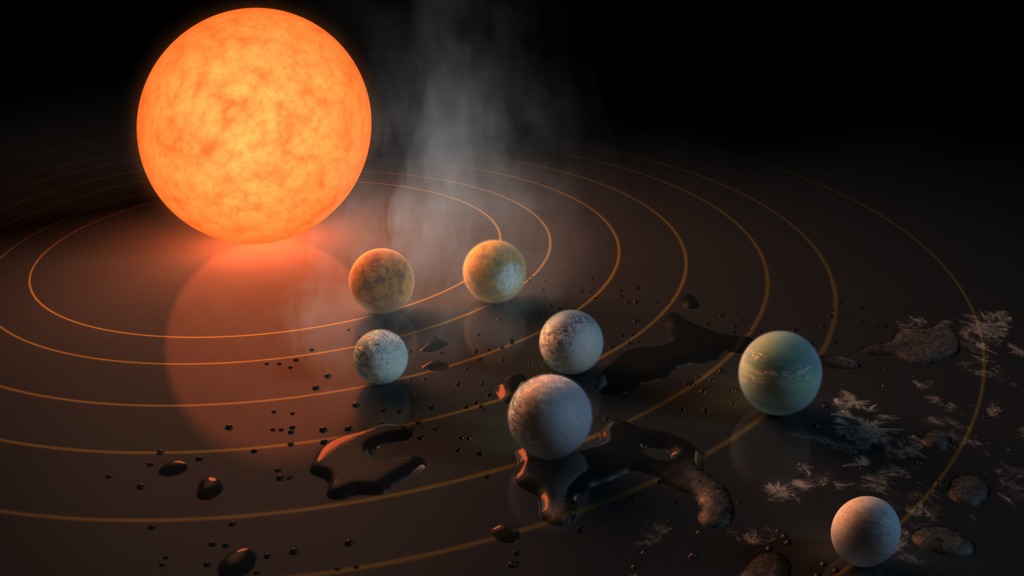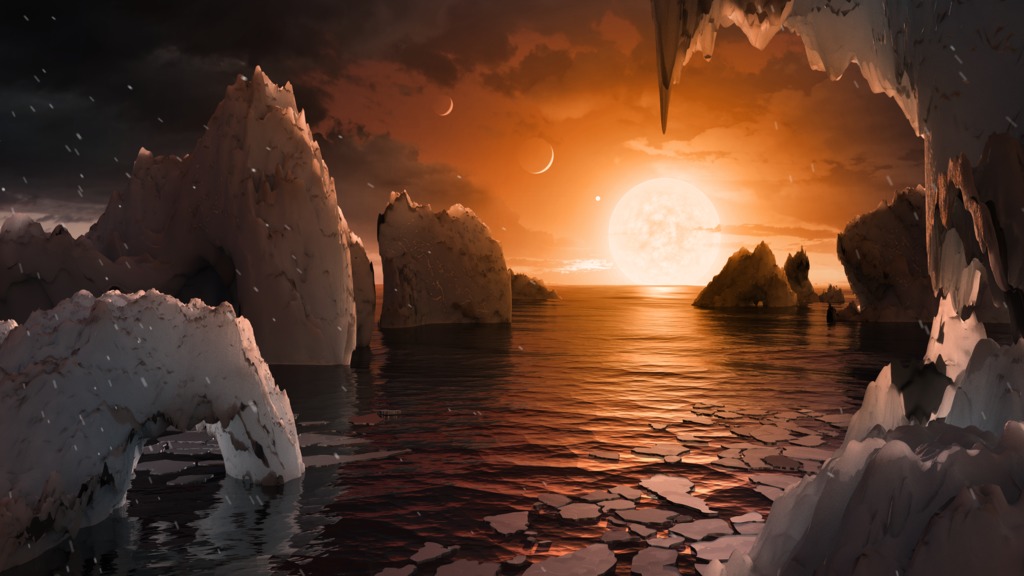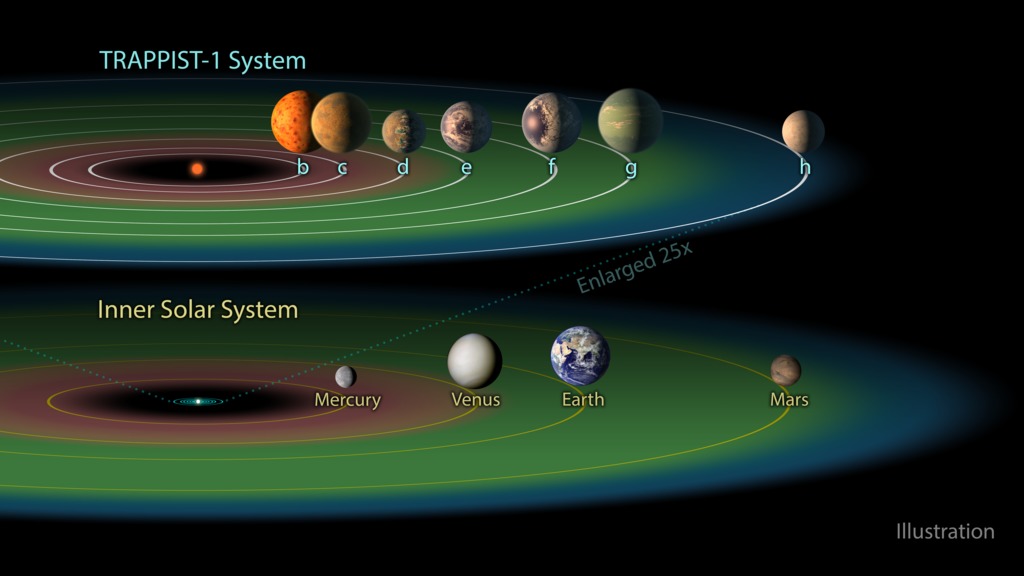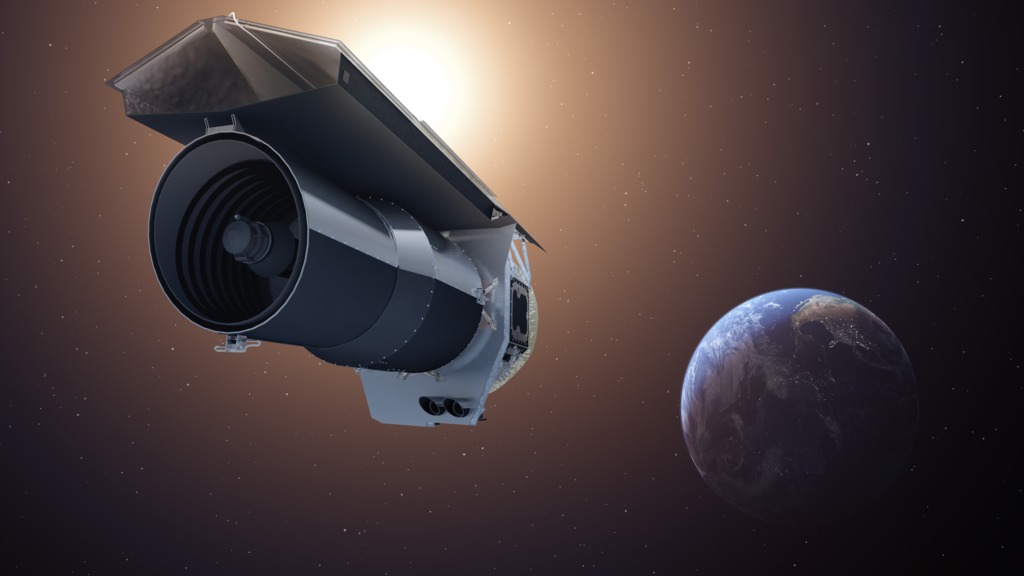Planets and Moons
ID: 12541

About 40 light years (235 trillion miles from Earth), seven Earth-size planets orbit around a single star. Called the TRAPPIST-1 system, all seven planets could have liquid water – key to life as we know it – under the right atmospheric conditions. But the chances are highest with the three planets that were found in the habitable zone, the area around the parent star where a rocky planet is most likely to have liquid water. The initial discovery of the system was made by researchers using The Transiting Planets and Planetesimals Small Telescope (TRAPPIST) in Chile, who discovered two planets in the system by observing the dip in light that occurs when a planet passes between its sun and Earth. Assisted by several ground-based telescopes, NASA'a Spitzer Space Telescope, which trails Earth's orbit around the sun, confirmed their existence and discovered five additional planets. Researchers plan to study the atmospheres of these planets to determine their similarities – or differences – from Earth. Watch the video to learn more.



Earth-Sized Worlds




For More Information
Story Credits
Lead Scientists:
Michael Gillon (University of Liège, Belgium)
Sean Carey (Spitzer Science Center)
Lead Writer:
Elizabeth Landau (JPL)
Michael Gillon (University of Liège, Belgium)
Sean Carey (Spitzer Science Center)
Lead Writer:
Elizabeth Landau (JPL)
Please give credit for this item to:
NASA's Scientific Visualization Studio
Video and Images courtesy of NASA/JPL/CalTech
NASA's Scientific Visualization Studio
Video and Images courtesy of NASA/JPL/CalTech
Short URL to share this page:
https://svs.gsfc.nasa.gov/12541
Keywords:
SVS >> HDTV
SVS >> App
NASA Science >> Planets and Moons
https://svs.gsfc.nasa.gov/12541
Keywords:
SVS >> HDTV
SVS >> App
NASA Science >> Planets and Moons







